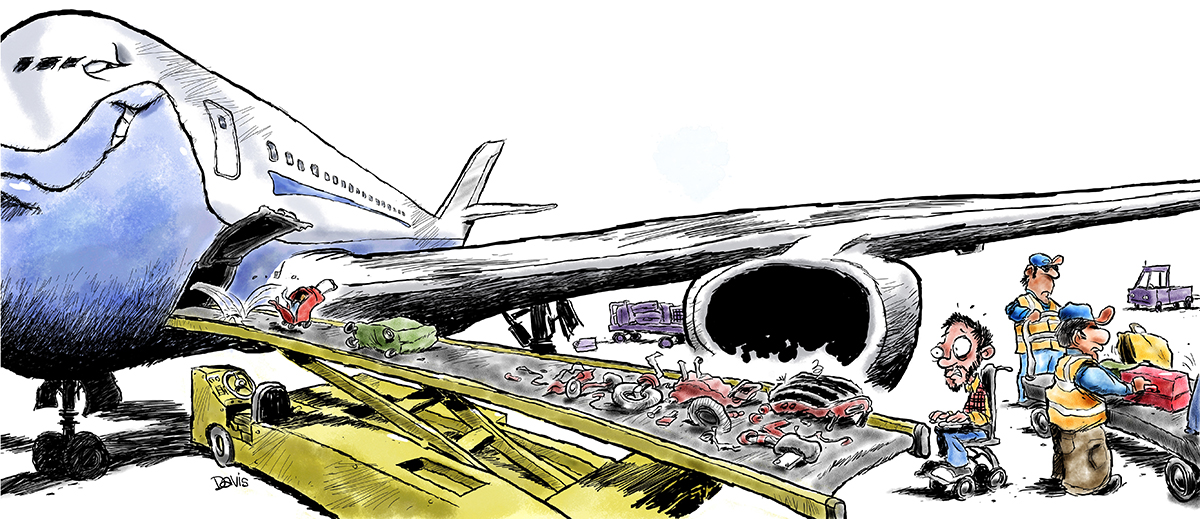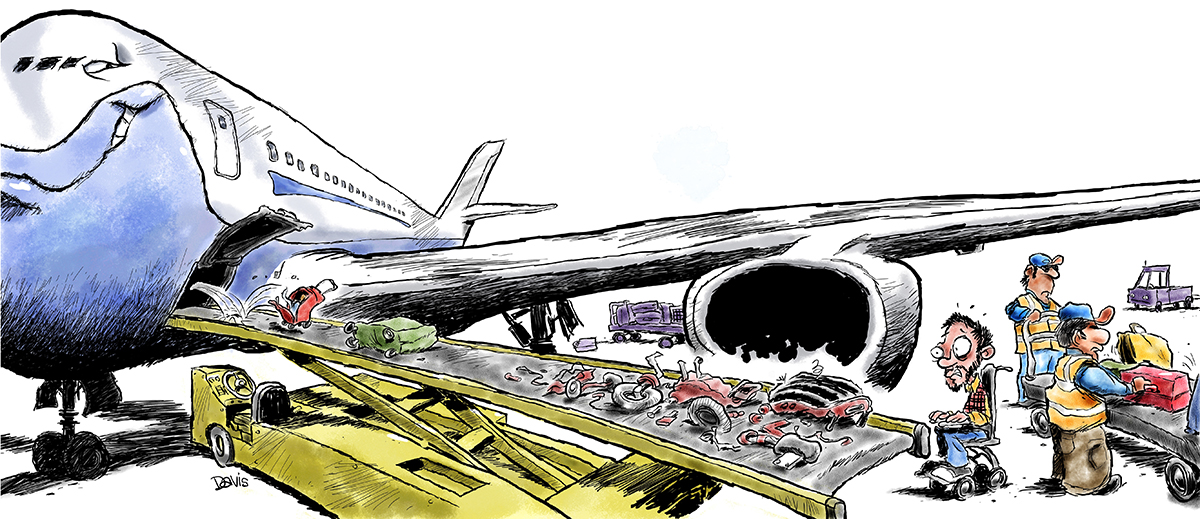Wheelchairs and Airline Travel: A Turbulent Experience
Wednesday, May 9, 2018

By MATP Staff Member Laura Hall
Earlier this month, I had the opportunity to represent the Michigan Assistive Technology Program at the National Symposium of AT Act Programs meeting and visit Capitol Hill to speak with legislators about the importance and benefits of assistive technology. Typically, I fly to this event, but due to some bad experiences in recent years, chose to travel by rail (an adventure all of its own that I will write about soon).

Photo Credit: Doug Davis, New Mobility Magazine
If you use a mobility device or other type of expensive AT, I’m sure you can understand why I made this choice, Taking a flight often means you’re taking the gamble of your equipment coming out in one piece. Since most mobility devices can’t be brought aboard, they are typically stored below with luggage, and just like luggage, they can be lost or damaged. I’ve had my power chairs arrive at my destination with broken armrests, headrests, joysticks, and in one situation, completely inoperable. Airlines are required to compensate for damaged wheelchairs, however, the process of getting payment and the repair itself can take many months. I am not alone – a United Spinal Association Survey of Wheelchair Damage and Air Travel found that on average, people with disabilities experience wheelchair damage aboard flights 1 to 3 times.
A few companies have marketed products to improve transferring and protect equipment in-flight. For example, the Comfort Carrier and Transfer Pants are portable products that claim to assist with transfers during travel. “The Flyer” Wheelchair Protection Case is a rigid box with a top and bottom piece that claims to be “armor for your wheelchair”. It should be noted that there are few reviews on these products and the MATP never promotes or endorses any particular piece of assistive technology.
Fortunately, there are disability advocacy groups working hard to require better standards related to passengers with disabilities and their mobility equipment. I recently participated in United Spinal Association’s webinar: How to Improve Air Travel for Wheelchair Users. In addition to discussing the problems that passengers with disabilities experience, the presenters also spoke of efforts that are being made to improve air travel. Specifically, they are working with lawmakers to pass the Air Carrier Access Amendments Act of 2017-2018. This legislation would increase penalties for damaged wheelchairs, and allow passengers with disabilities to sue in court. It would also require higher standards for accessibility, safety, and airline/airport employee training. Finally, it would help create a Passengers with Disabilities Bill of Rights and a federal advisory committee on the air travel needs of passengers with disabilities. If you would like to support this legislation, United Spinal urges you to contact your legislators to co-sponsor and support S. 1318 (Senate) and H.R. 5004 (House).
Have you experienced problems with air travel? Do you have tips or tricks for minimizing the chance of damage to AT equipment? Leave us a comment!

